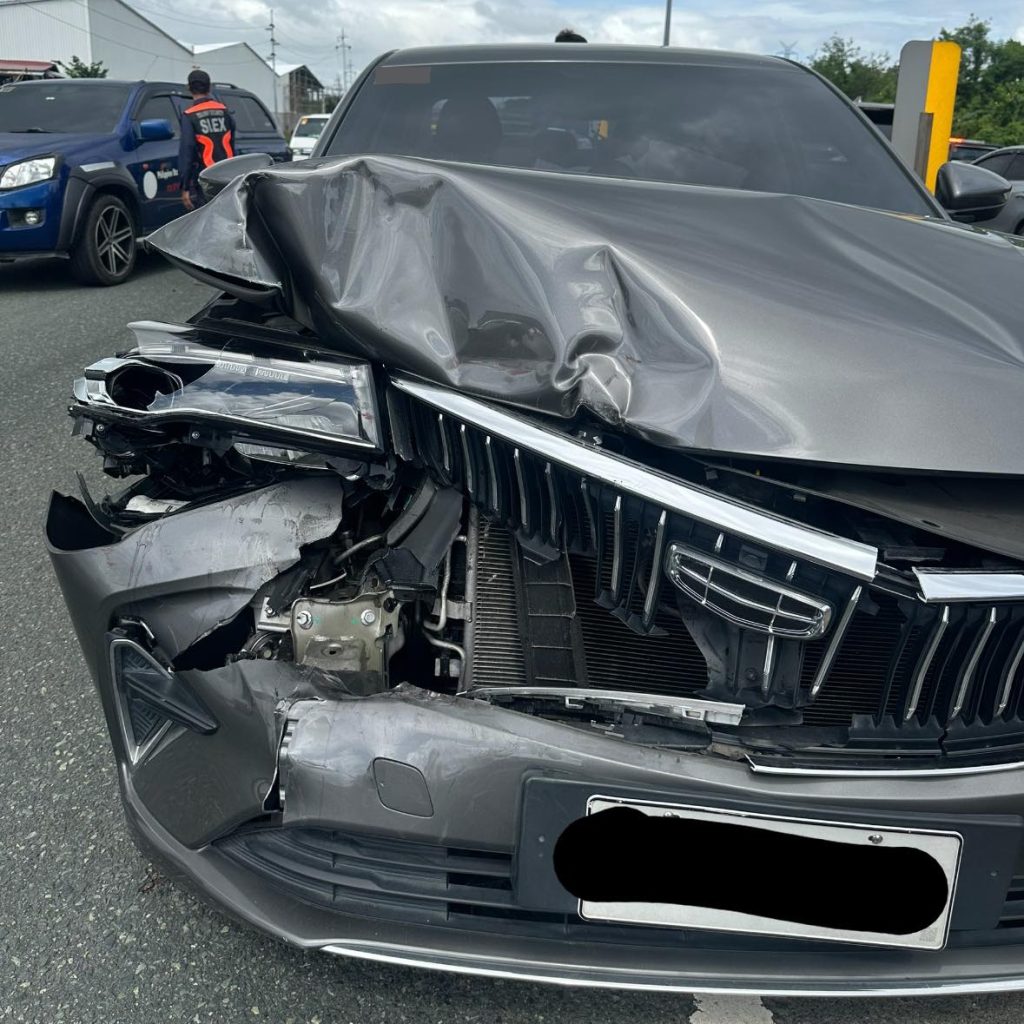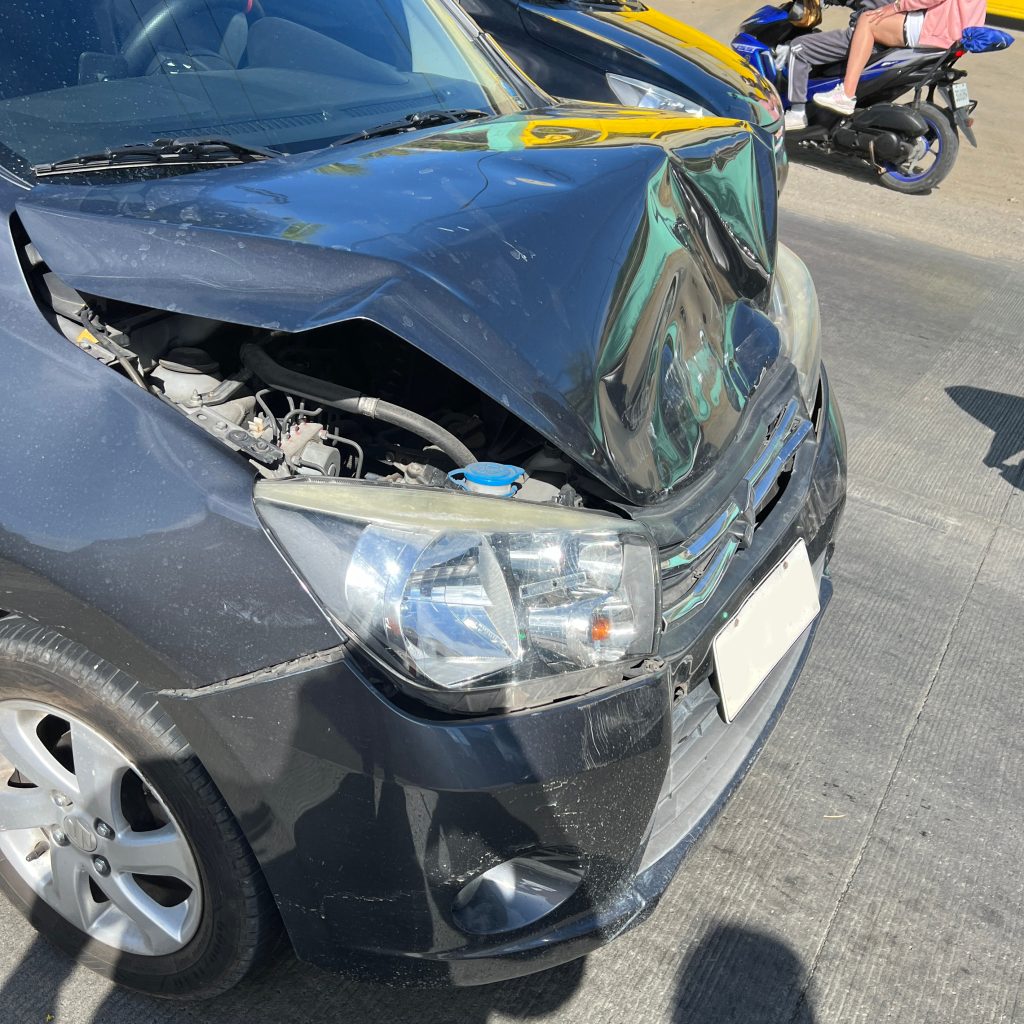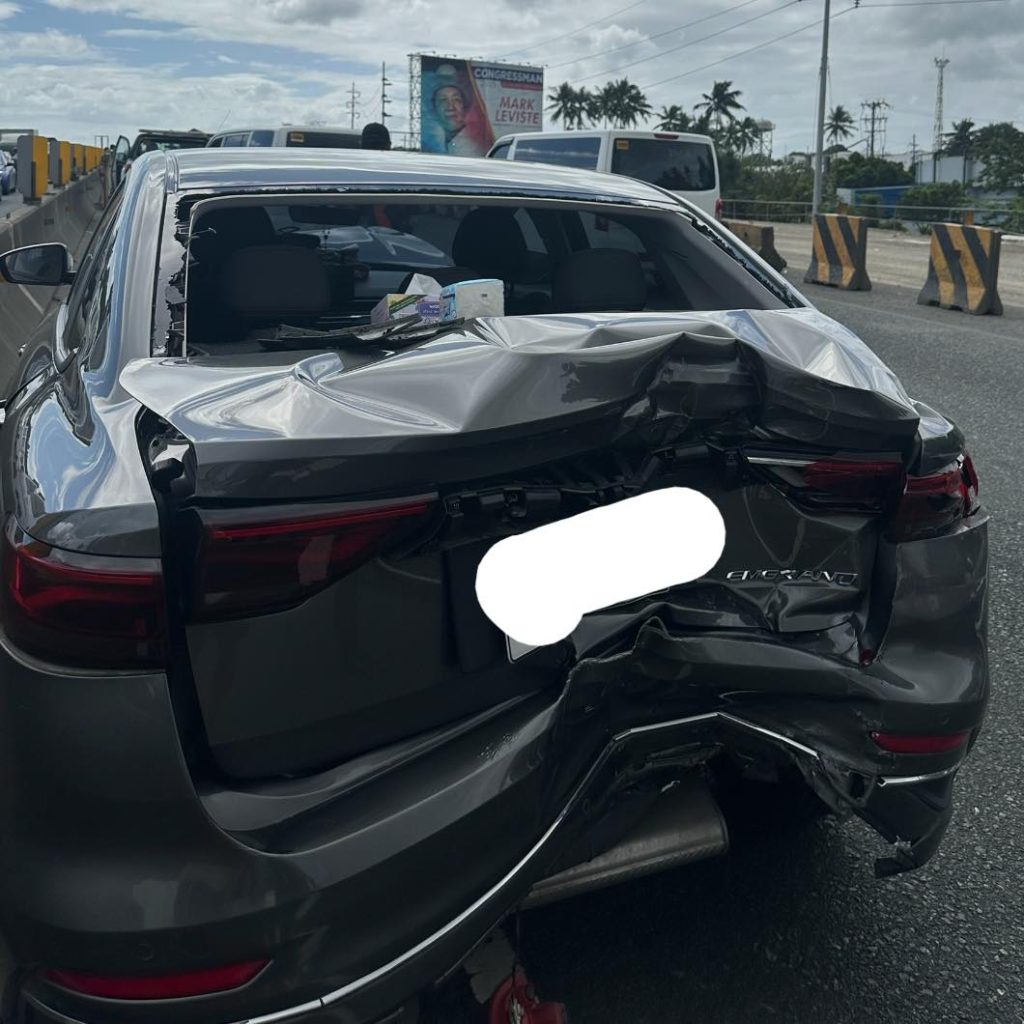Geely Philippines was viral again on Facebook recently for another issue. This time, a Geely Emgrand was involved in an accident and the airbags didn’t deploy despite the seriousness of the impact. Is this a Geely issue or an industry one?
I can tell you right now it’s not unique to Geely. The same thing happened to me last year. I figured in an accident in Bulacan and my low Suzuki Celerio met the rear of a taller Chevrolet Trailblazer. The higher rear bumper met my front grille and up, crumpling the hood. In the Geely’s issue, the car was hit at the back first and then the front right headlight side met the rear left side of the car in front. The speed was higher and the impact was definitely stronger as it triggered a 4-car collision on the highway. Still, the airbags weren’t deployed. So what gives?


First, we’ll have to take into account where airbag sensors are placed. They are in different locations behind the front bumper but mainly, they are placed near the impact bar at the center which is part of the main chassis. More modern cars will have a rear sensor but if you only have front airbags, this would be very unlikely. Some also have a secondary sensor near the steering wheel assembly to avoid early deployment of airbags. This is done so if ever you have a frontal collision that’s not high speed and the sensors in front get crushed, there’s another sensor that checks if the cabin will be compromised or not.
The Emgrand seems to be the Comfort trim, based on the gray upholstery from the rear window, and so it only has front airbags. This is probably why despite the first impact at the rear and the severity of it, the airbags didn’t deploy. The second impact wasn’t as strong as the first, judging from the picture, but was enough to maul the right headlight section. The impact bar was kept intact and most of the front bumper was unscathed.

The cabin, too, was intact and had no deformations aside from the slight crumple in the C pillar at the rear. Maybe the fact that the cabin was intact and the front impact was weaker than the rear made the car decide not to deploy the airbags. It also depends on the threshold settings of the sensors, at which angle, speed, or amount of force they are supposed to deploy the airbags.
This brings forth a question – should brands amend the standard for airbags? It’s very understandable that the driver of this Geely Emgrand is asking the brand why the airbags didn’t deploy. They were sandwiched between two cars from a strong rear impact that shattered the rear glass and was enough to trigger a 4-car collision on the highway.
It’s only natural that the front impact was not as strong as the rear, since the car already absorbed much of the force. But this meant that the front sensor had a false reading on the situation, which could have led to the airbags not being deployed. The car could have judged the accident more accurately if there was a rear sensor.
In cars with Side and Curtain Airbags, manufacturers put additional sensors in the car near the B and C pillar (if applicable). That’s understandable since those airbags are meant for side collisions. In contrast, front airbags are cushion for the front passengers from frontal impact. But since rear impacts also push the passengers forward, should brands make rear sensors as an additional standard for activating them?
Another thing that should be asked is the placement of the sensors. How many is the standard, and where should they be placed? My Suzuki Celerio, for example, only has one sensor in front and it’s placed at the lower left side. This is why when I had a collision higher up, despite being full frontal, the airbags weren’t triggered. The manual supports this by stating that in an event where the car goes under the bed of the truck or similar (mine was against a taller SUV), the airbags may not inflate.
This question regarding safety is not limited to brands in the Philippines. It must be escalated to the regional offices in the least since they engineer the cars and in order to get the conversation going with safety institutions like the New Car Assessment Program. For their part, Geely Philippines is still investigating the matter. Only they know if the airbags really failed to deploy or there was not enough force in both impacts to trigger the airbags.
For now we must remember that the full name of airbags are SRS Airbags. SRS stands for Supplementary Restraint System (or Secondary in some cases). The primary? Seatbelts. Volvo already gave the 3-point seatbelt for free to the world so use it every time it’s available even if you’re not in front.

